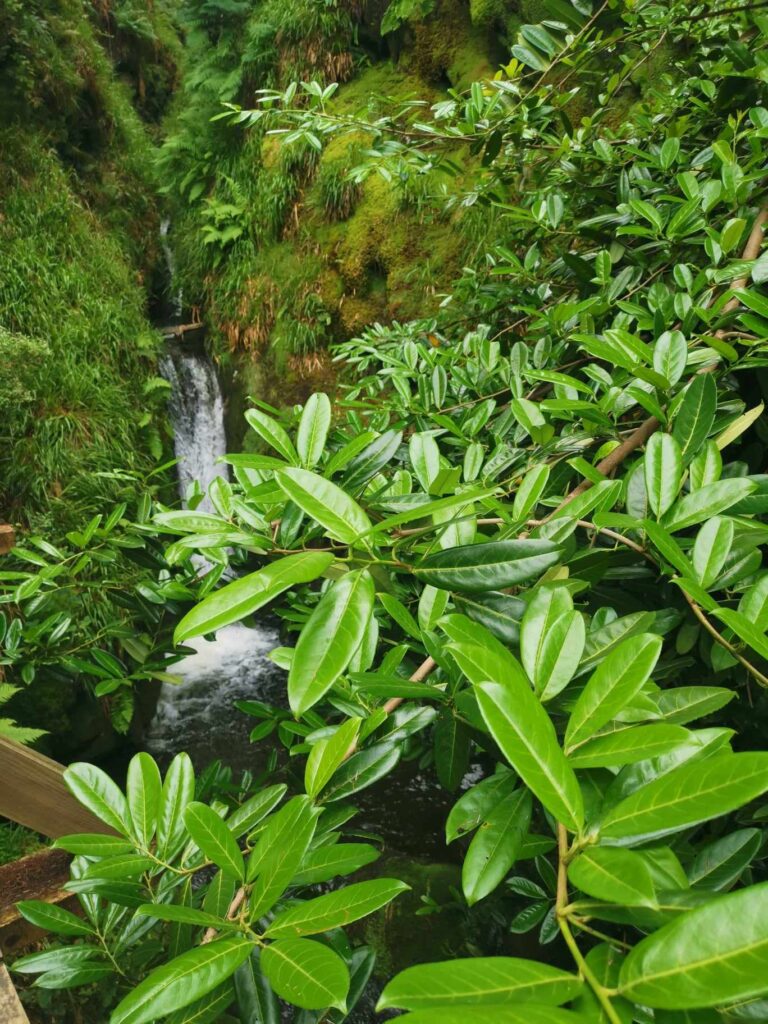There’s an alien invasion taking place right now on the Isle of Man that few people are aware of. It’s happening right under our noses but most of us seem blissfully unaware. We are talking about the spread of the foul rubber-leaved blight – cherry laurel (prunus laurocerasus)
It is actually native to Asia. It was first introduced to Britain at the end of 19th century. Unfortunately, it has since become a real favourite among the island’s gardeners. A mature bush can reach heights of up to 15 meters. They quickly escape gardens, and when uncontrolled form impenetrable thickets that shade out native vegetation. It is particularly problematic in our glens, where it outcompetes native Manx flora, leading to the loss of habitat for wildlife and degrading ecosystems.
It is able to reproduce vigorously through both seeds and suckering. Once established, eradication is often extremely challenging due to its ability to resprout from roots and stumps. It is not actually related to the laurel tree. Naming it the Freddy Kruger weed would make a lot more sense as it is almost impossible to get rid of. You think you’ve killed it but it just comes back again and again and again. Be careful when attempting to clear a patch, if you drop a branch on the ground a new bush will sprout from it. It makes you wonder why garden centres bother selling them. If you really want one, just cut a branch from a bush, stick it in a pot and hey presto, yet another cursed cherry laurel.
The rubbery, dark green leaves shade out everything underneath. That is one of the best ways to find it quickly: just look for a large dark bush beneath which no sunlight penetrates. Be warned, once you have learned to identify it, the sight of it spreading invidiously at your favourite spot can spoil a country walk. Sadly, it can be found all over the island: Glen Helen, Glen Roy, Tholt y Will, Ballachurry Nature Reserve, Molly Quirk’s Glen, the Dhoon Glen, Baldrine Glen, and many other of our favourite places. The foliage of the cherry laurel actually contains cyanide so grazers learn to avoid it. What is more, as they drop and decay, the leaves release cyanide into the soil making it difficult for our native plants to compete. Like its partner in crime, the rhodedendon, the flowers are poisonous.
Gardeners sometimes claim that “bees love it”. Well your kids probably love chicken McNuggets, it doesn’t mean they’re healthy! The Romans knew cherry laurel. Emperor Nero used a poison derived from it to kill inconvenient family members. So next time you are choosing a plant for your garden, don’t be seduced by the dubious charms of the cherry laurel. We at the Isle of Man Woodland Trust would always recommend something native to help our pollinators and increase biodiversity. There are plenty to choose from: holly, rowan, guelder rose (viburnum), dogwood, hawthorn, beech and many more. We wouldn’t normally advocate AstroTurf but even plastic grass is an improvement on the Freddy Kruger weed!

written by a guest author in September 2023